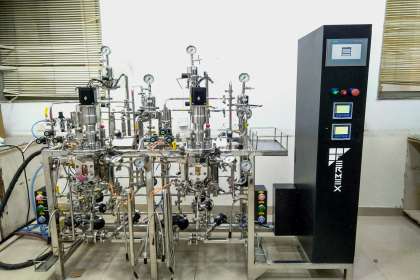
Introduction:
In recent years, the world has witnessed an extraordinary scientific feat that has saved countless lives and paved the way for a brighter future – the production of life-saving vaccines. These tiny vials of hope hold within them the power to combat infectious diseases that have plagued humanity for centuries. This blog explores the fascinating journey of vaccine production, highlighting the remarkable triumphs of science and the collaborative efforts that have revolutionized global healthcare.
The Vital Role of Research and Development:
The journey of vaccine production begins in laboratories, where dedicated teams of researchers embark on a quest to understand the disease-causing agents and design effective countermeasures. This initial phase involves extensive study, experimentation, and evaluation of potential vaccine candidates. Scientists work tirelessly to identify antigens that can trigger an immune response without causing harm to the recipient.
Once promising vaccine candidates are identified, they go through pre-clinical testing, typically conducted on animals, to assess their safety and efficacy. Only the most promising candidates progress to clinical trials, where they are tested on human volunteers in multiple phases. Rigorous testing ensures that any approved vaccine is safe and capable of generating a robust immune response.
Manufacturing at Scale:
Once a vaccine successfully navigates the clinical trial stages and receives regulatory approval, the next challenge lies in scaling up production. Mass production of vaccines is a complex process involving specialized facilities, state-of-the-art equipment, and stringent quality control measures. Manufacturers must adhere to Good Manufacturing Practices (GMP) to ensure the consistent production of high-quality vaccines.
During a pandemic or public health emergency, ramping up production becomes even more critical to meet the urgent global demand. Collaboration between pharmaceutical companies, governments, and international organizations is vital in establishing efficient supply chains and equitable distribution of vaccines to vulnerable populations worldwide.
Challenges and Breakthroughs:
Vaccine production is not without its challenges. Some vaccines require a delicate balance of live or inactivated pathogens, adjuvants, stabilizers, and preservatives to ensure their efficacy and shelf life. Additionally, the logistics of transporting and storing vaccines, particularly those with stringent temperature requirements, can be formidable, especially in remote or resource-limited areas.
However, the ongoing pursuit of scientific knowledge, coupled with technological advancements, has led to significant breakthroughs in vaccine production. Innovative techniques such as mRNA vaccines, which proved remarkably effective during the COVID-19 pandemic, demonstrate the potential of cutting-edge technology in revolutionizing vaccine development.
The Power of Collaboration:
The success of vaccine production is an epitome of global collaboration. Governments, international organizations, private companies, academic institutions, and non-profit organizations unite their efforts to accelerate research, development, and distribution. Initiatives like COVAX have shown that when the world unites with a common goal, even the most challenging tasks become achievable.
Conclusion:
Vaccine production is a testament to the brilliance of human ingenuity and the unyielding spirit of collaboration. It is a story of dedication, perseverance, and compassion that has transformed the landscape of global healthcare. As we continue to face new health challenges in the future, the lessons learned from this remarkable journey will undoubtedly guide us in our efforts to protect and uplift humanity.
Today, we stand on the brink of a new era in medicine, where breakthroughs in vaccine production herald a brighter and healthier future for generations to come. Let us celebrate the triumphs of science and the collective will that have made this possible and remain steadfast in our commitment to make vaccines accessible to all, leaving no one behind in our quest for a healthier and more resilient world.
























